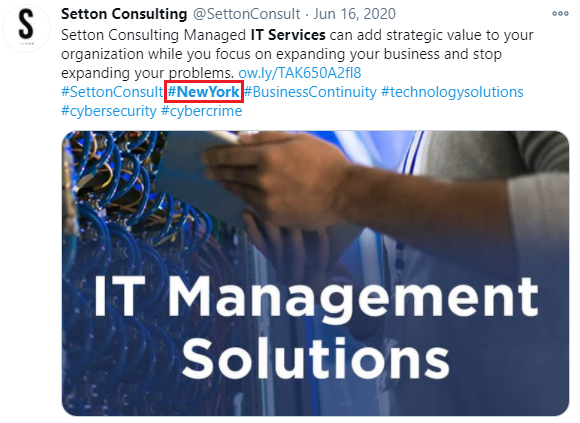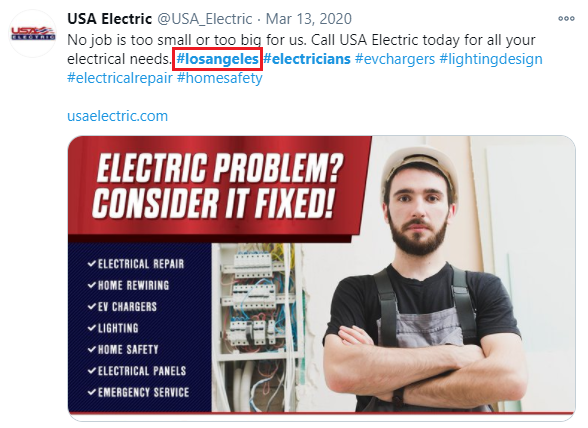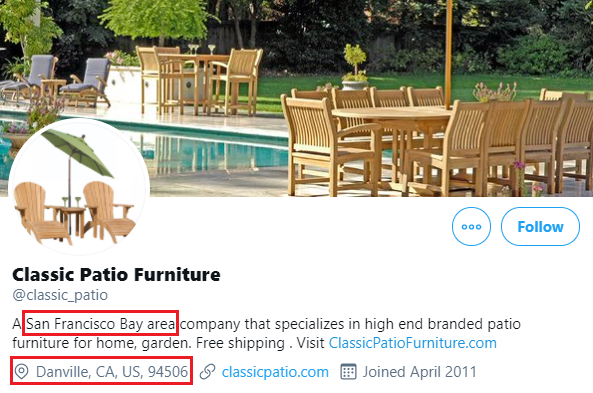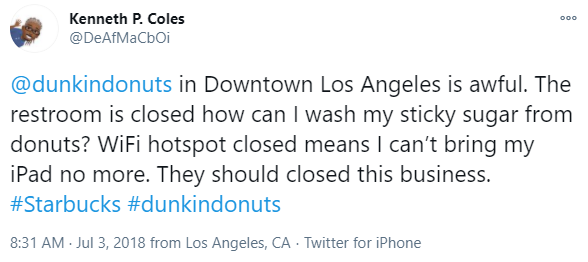A Guide To Local SEO in 2020
Contents
-
- Delving Into a Local SEO Strategy in 2020
- What is Local SEO?
- 10 Local SEO Tips for 2020: Key Tips on How to Rank Locally
- Create Location-Friendly Content
- Ensure Mobile-Friendliness.
- Google My Business is Stilla Game Changer; Jump on Board!
- Build Local Backlinks.
- Optimize Your Website for Local Voice Search
- Request Reviews on “The Big Three”.
- Maintain a Stellar Social Media Presence.
- Improve Your Internal Linking Structure.
- Ensure Seamless Reputation Management
- Consistency, Consistency, Consistency!
- Final Word
Delving Into a Local SEO Strategy in 2020
If you run a local business, we can take a guess at what your search history looks like:
“How can I increase local traffic?”
“How can I improve rankings for local SEO?”
“How can I rank in the Google 3-Pack?”
Sounds about right?
All these search queries fall under the umbrella term “local SEO.” In other words, if you master local SEO, you pretty much cover all the bases and save yourself the trouble of running a dozen individual search queries.
What is Local SEO?
If you run a small business that’s restricted to a certain location (neighborhood, town, city, country, or state), local SEO ensures that your marketing efforts will be strategically targeted at individuals within that region.
Let’s say you run an electronics e-commerce store in Atlanta. Since your clientele is based in Atlanta, marketing to consumers in Savannah or Augusta would defeat the purpose of your campaign.
Instead of optimizing your business for generic search results, you need to optimize it for local search.
Local SEO helps you do just that by making your products/services/content visible to a wide local audience.
As you attract local visitors, you’ll generate high-quality traffic and increase your conversion rate. And while focusing your efforts on local SEO makes complete sense conceptually, its practical efficacy has been proven time and again.
According to research:
-
-
- 4 in 5 consumers want search engines to offer localized results
- 76% of consumers who run a local search on their phone end up visiting the business within 24 hours
- 2 out of 3 smartphone users are more likely to purchase from a business that offers a mobile-friendly site with customized information based on their location
- Mobile searches for local businesses have recently grown by a whopping 200%
-
Last year, we compiled a local SEO checklist for 2019. From touching upon the importance of leveraging Google My Business to discussing the significance of online reviews, we covered all the bases that were relevant in 2019.
Of course, there have been many changes since.
Local SEO isn’t a stagnant strategy; it’s constantly evolving and taking new shape based on current trends, consumer patterns, and algorithm changes.
To help you get a good grasp on how to do local SEO in 2020, we’ve compiled an updated checklist that focuses on how to perform local SEO and how to optimize your website for local search keeping in mind 2020 developments. Use our definitive guide to local SEO in 2020when creating a winning strategy for your small business, startup, or corporation.
Let’s dive in!
10 Local SEO Tips for 2020: Key Tips on How to Rank Locally
1. Create Location-Friendly Content
If there’s one local SEO strategy that can be implemented right away (while reaping powerful results), it’s local content creation. In fact, we’d go so far as labeling it the crème de la crème of local SEO.
The reasoning is simple.
Web users are smart; they understand that running a generic search will most likely fetch results that may not be of relevance. If a consumer in Los Angeles is on the lookout for modern furniture, their search query will be highly specific. The last thing they want is to fall in love with a gorgeous pair of sectionals, only to find out that the business is based in an entirely different state.
Over the years, trial and error has played its hand in helping consumers understand the workings of the game.
Instead of simply searching for “modern furniture,” a Los Angeles-based consumer is more likely to search for “modern furniture in Los Angeles.”
Here’s a snippet of the search results for this specific query:
Notice how each title tag includes the geographic keyword “Los Angeles.” In fact, if you pay close attention, you’ll realize that the meta descriptions also include the location.
It’s evident that these businesses have optimized their website for local search. This neat trick is a great way to climb search engine result pages (SERPs) and sneak your way into the Google 3-Pack.
According to research, 75% of web users never scroll past the first SERP. And even if your business climbs SERPs and eventually earns a spot on the first page, the work doesn’t end there. In fact, the competition on the first page is ruthless.
The top five search results receive 67.6% of clicks, whereas the remaining five receive less than 3.73%. Optimizing product/service pages and preexisting content for location is a great way to dominate the top local search results.
Incorporate local keywords into
URLs, title tags, meta descriptions, H1–H4 headings, image filenames, image alt tags, and the body of the text.
In addition, create new location-friendly content to build a wide local audience. For instance, if you sell wrought iron and steel doors in certain states, create content centered on those locations. Your local SEO content creation strategy should include: Blogs Articles Guest Posts Press Releases Infographics and Instructographics Videos OUAI’s local pages are a great example of going about this the right way!

We also suggest getting creative and coming up with unique content based on local trends, events, pop culture references, and holidays.
Keep your audience in mind to ensure you don’t end up alienating them for the sake of location-friendliness.
For instance, if you offer home downsizing services for senior citizens, creating content around Gen Z-friendly local events wouldn’t make much sense. Instead, do your research and compile a list of trends that align with the interests of your demographic.
Keep making adjustments to ensure relevance with time.
Expert local keyword research will help your website get a much-needed boost on SERPs.
In addition, keep a laser-sharp focus on consistency to avoid a potential dry spell. The local SEO landscape is fiercely competitive; if you fail to produce consistent and impactful content, it’s very likely that your SERP rankings will begin to fall.
Steer clear of complacency and stay on your toes to ensure you maintain a winning online presence for local search in the long run.
2. Ensure Mobile-Friendliness


According to the Pew Research Center, an astounding 96% of Americans use a mobile device. In fact, the large majority of consumers go online using their smartphone as opposed to other electronic devices, including computers, laptops, tablets, etc.
Smartphones are easy-to-use, accessible, and compact. While their popularity is currently at an all-time high, it’s expected to grow further in 2021.
If you haven’t created a mobile-friendly website, you’re potentially losing out on a large number of local customers who solely use smartphones to purchase products/services online. In fact, the lockdown period has further fueled mobile internet use, resulting in more people looking for local products/services.
Curious about how to optimize your website for local SEO in 2020? Start by creating an aesthetically pleasing, user-friendly, interactive, and optimized mobile-friendly website to increase local traffic and do your business justice. Since Google prioritizes mobile-friendly websites, your pages will get crawled, indexed, and ranked better; it’s a win-win situation any way you look at it!
Use Google’s Mobile-Friendly Test to determine how well your site is performing on mobile devices. If there are any issues, we suggest resolving them urgently. Essential factors like page speed, responsiveness, and user-friendliness play a big role in expediting the consumer buying process.
Of course, don’t forget to optimize your website for local search.
A whopping 40% of online transactions happen on mobile devices.
Make the most of the staggering statistics by adding easy-to-find, compelling, and witty calls to action (CTAs) on your mobile website. Get creative to ensure the text grabs your audience’s attention and prompts immediate action. It should also appear seamlessly and vividly stand out on the page without overwhelming consumers.
It’s a fine balance, but the right resources and expertise can help you get it right.
Opt for a clean and user-friendly navigation bar that allows consumers to browse through different pages with ease. The last thing you want is to frustrate your audience by using illegible fonts, off-putting font sizes, and messy graphics.
Here are some optimization tips to help you pull off a winning mobile website.
Create a seamless and visually engaging mobile-friendly website
by consulting professional web designers and developers.
Click here for a free in-depth analysis report of your website
3. Google My Business is Still a Game Changer; Jump on Board!

Update and optimize your listing on a weekly basis to inch your business closer to the Google 3-Pack.
We suggest checking out our previous blog to familiarize yourself with the ins and outs of how to optimize your Google My Business listing.
4. Build Local Backlinks
While you may be familiar with the importance of building quality backlinks, local SEO takes things a step further.
Instead of simply leveraging link building, focus on local link building.
What does this mean?
It’s simple. Each time you receive a backlink from a website with high domain authority, draft an email requesting them to include your location in the anchor text. This will improve the quality and value of the backlink, resulting in better rankings and increased traffic.
We suggest informing them about the benefits of making the content more location-friendly for their business as well. This is more likely to help you receive a response in the affirmative.
Communicate the same concern to your backlink building partners so they can include your business location in the anchor text each time they offer you a backlink in the future.
If you’re new to link building, we suggest checking out the following blogs for a quick overview of the basics:
And while building backlinks is important, improving your internal linking structure is equally imperative.
Each time you produce new content, link to earlier blogs/articles/product pages/service pages and include local keywords. This is especially recommended for the CTA.
The simple yet powerful trick is a great way to help your content become more visible for local search. The outcome? A much-needed boost in local traffic and rankings.
5. Optimize Your Website for Local Voice Search
Local voice search is the newest player in the game that’s easily becoming a top contender.
According to Google, 20% of all searches on Google are done by voice.
That’s a lot of searches.
Luckily, you don’t need to do much to optimize your website for local voice search. Voice queries are very similar to regular search terms. Of course, they tend to be a bit longer and more natural. For instance, a regular search term like “best pizza place in Ohio” would probably be modified to “what’s the best pizza place in Ohio that’s open right now” if spoken.
Use schema markup (also known as structured data) to help Google organize and categorize your content accordingly. It may sound complex, but it’s a piece of cake.
In short, schema markup is data about the information on your website. While your audience will not see it, search engines will use this information to understand your content better and crawl, index, and rank it accordingly.
Ultimately, schema markup helps Google fetch more relevant and informative search results for web users. We recommend getting in touch with local SEO professionals who can do the work for you. It doesn’t take long, but makes a big difference in helping Google classify essential information, including your business hours, phone number, address, directions, etc.
Each time a web user
runs a relevant voice search, Google will effectively pull your listing out of the directory and include it in the search results.
Another great way to optimize your website for voice search is by building a stellar Google My Business profile. Choosing the right categories and ensuring consistency across the board will help your business appear in the top results for voice search. As stated above, the local SEO strategies for voice search are very similar to those for regular search so there’s no way you can go wrong here.
6. Request Reviews on “The Big Three”
Local online reviews are a goldmine for businesses.
We emphasized the significance of reviews in our earlier blog and can’t help but pay homage to this brilliant strategy in 2020 as well. It’s timeless and won’t lose its shine irrespective of how many new strategies enter the local SEO game in the future.
According to research, 53% of Americans rely on product/service reviews and ratings to guide their online shopping experience. In fact, reviews can boost the conversion rate by a whopping 380%.
While reviews are still just as important today as they were a few years ago, there have been certain alterations. Currently, reviews hold the most weightage if received on “the big threes”—Google, Facebook, and Yelp.
While reviews on other social media platforms play a big role in shaping audience opinion and improving brand identity, they don’t directly impact rankings.
Of course, receiving great reviews on Google is your golden ticket to entering the Google 3-Pack. However, reviews on Facebook and Yelp also heavily impact rankings, though not as directly as Google.
We suggest requesting reviews on each platform and maintaining a strong online presence to ensure customers have a positive experience.
However, avoid going overboard by spamming or heavily incentivizing customers. Instead, share a link to the review form on social media, Google My Business, and in the CTAs.
A balanced approach will help you generate reviews without putting off your customers. It’ll also give your Google listing a much-needed boost.
Each time a web user searches for location-specific products/services in your industry, your listing will show up (if you’ve mastered local SEO, that is). And as they browse through your listing, the reviews will vividly stand out.
Here’s a glimpse of what we’re talking about:
By doubling down on reviews—especially on Google, Facebook, and Yelp—you’ll manage to maintain a pristine brand identity and make it easier for web users to feel like they can trust your company and do business with you.
When the reviews are good and plentiful, web users won’t have to look elsewhere; they’ve already found exactly what they’re looking for!
Ultimately, excellent customer service will help you dominate the web for local search and grow your business in the long run. Pull out our comprehensive guide to local SEO in 2020 when you’re about to create a winning strategy. It’ll help you check off all the right boxes and start off on the right foot.
7.Maintain a Stellar Social Media Presence
You can’t master local SEO without focusing on social media.
Take a quick look at Setton Consulting’s Twitter post:
They’ve strategically used #NewYork to reach a geo-specific portion of their target audience: New York-based businesses that are looking for IT support.
USA Electric uses a very similar approach:
By using #LosAngeles in their Twitter post, they’re targeting Los Angeles-based homeowners who are looking for electrical support. By leveraging social media, these companies are excelling at reaching local customers.
Here’s how you can use this strategy like a seasoned pro.
Make a list of all the locations your business serves. Your list may include a handful of cities or several states depending on the size and reach of your business.
Once you have a list ready, dive deeper. Break states into cities, cities into towns, and towns into neighborhoods.
Once you’re done, highlight the most popular locations.
All set?
These are the locations you should specifically target on social media.
Use hashtags, incorporate them into social media images/videos and captions, and include them in your bio (if they’re a handful of standout locations).
As you optimize your social media pages for the specific locations your business serves, you’ll manage to reach the right audience. Share these location-friendly posts aggressively to build a wide local audience.
8.Improve Your Internal Linking Structure
The large majority of companies that create local content fail to recognize the importance of working on their internal linking structure.
Sure, you’re written a spectacular location-specific blog. You’ve also shared it on social media. Is it time to let it organically gain traction now?
Yes and no.
Yes, let it organically gain traction.
No, can’t simply create a location-specific blog and call it a day.
Once you’ve generated local content, actively incorporate it into other blogs, articles, infographics, and related forms of content on your site. This is a great way to help local content continually generate traffic instead of eventually falling flat on its face after serving its purpose.
Keep the momentum going!
As you improve your internal linking structure, your local content will continually stay fresh.
The outcome? Better rankings, more traffic, and impressive local leads.
9.Ensure Seamless Reputation Management
Local consumers are quick on their feet. One social media search and they can easily identify negative reviews for your business in their state, city, town, or neighborhood.
Search for “Dunkin Donuts Los Angeles” on Twitter and you’ll receive a plethora of tweets—some positive and some negative. And if the not-so-flattering tweets outweigh the positives, well, you may lose local customers.
Here’s what we’re talking about:
All it takes is a straightforward “Dunkin Donuts Los Angeles” search to reveal social media posts that can be detrimental to your business.
So what do you do to turn things around?
You leverage reputation management services.
By helping you respond to negative comments the right way, remove inaccurate statements, and focus on the positives, reputation management experts can revamp your local online brand identity. Their aim is to counteract misleading trends and give you the chance to put your best foot forward.
These factors go a long way in helping you retain local customers.
10. Consistency, Consistency, Consistency!
When it comes to local SEO, consistency is key.
If you launch a winning strategy, make sure you continue to update it in the long run as opposed to letting it run its course. Abandoning your strategy will quickly undo your efforts and take you back to square one.
If you’re willing to see consistent results, you have to be consistent with your strategy. Tweak it on a monthly basis for better reach, rankings, and overall performance. As long as you keep your strategy up and running, the results will continue to astound you in the long run!
Final Word
We often have clients ask us one question: How can I increase local traffic? How can I improve rankings for local SEO?
If you’re struggling to kick-start or revamp your local SEO strategy, we can help. Our local SEO specialists have extensive experience and expertise in helping local businesses develop an edge in the industry.
Over the years, our team has successfully completed over 30,000 projects and continues to leverage innovative local SEO strategies for clients in a wide range of industries. Call 855-444-4777 now and let’s identify ways to improve your local SEO!




















